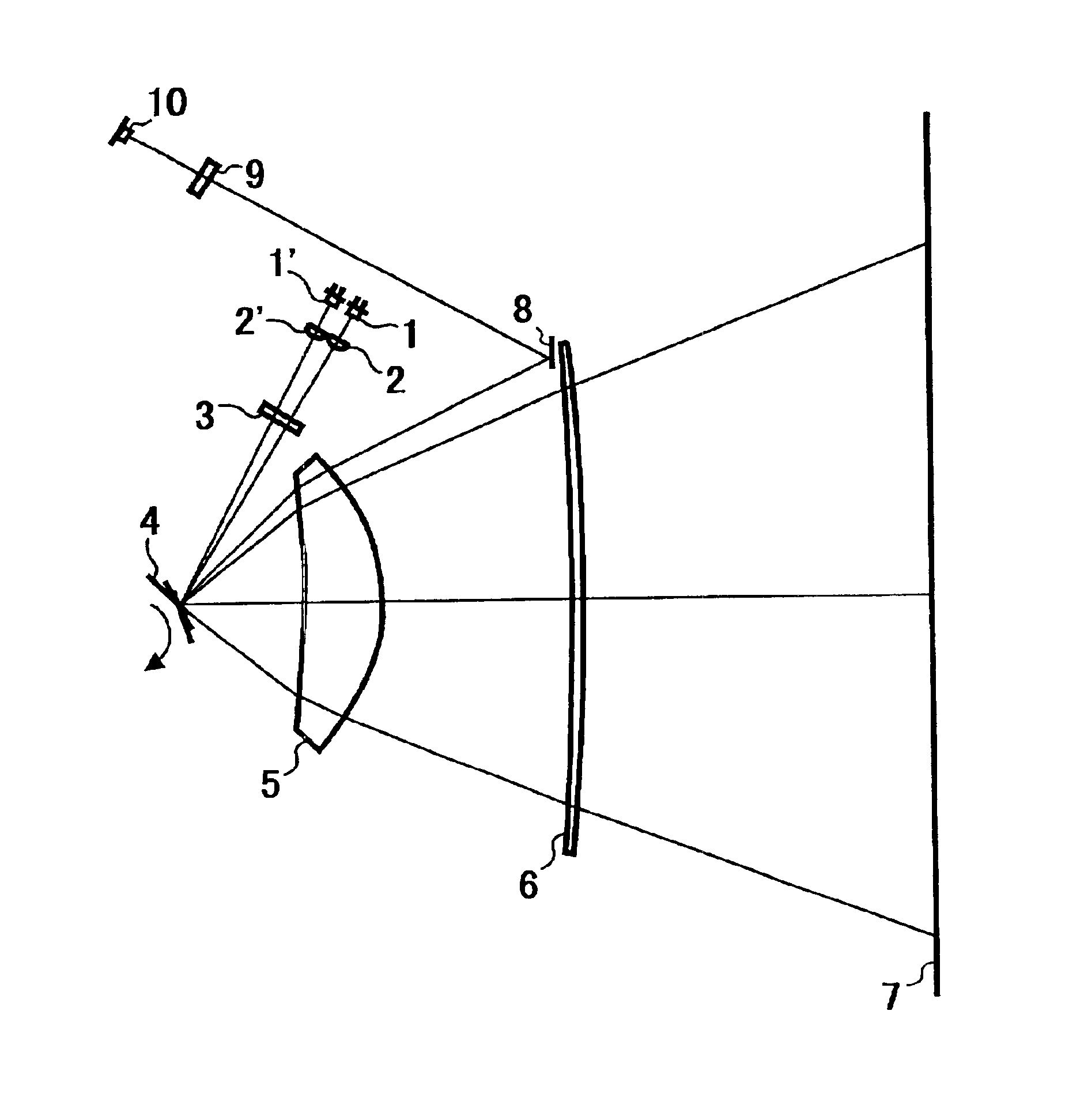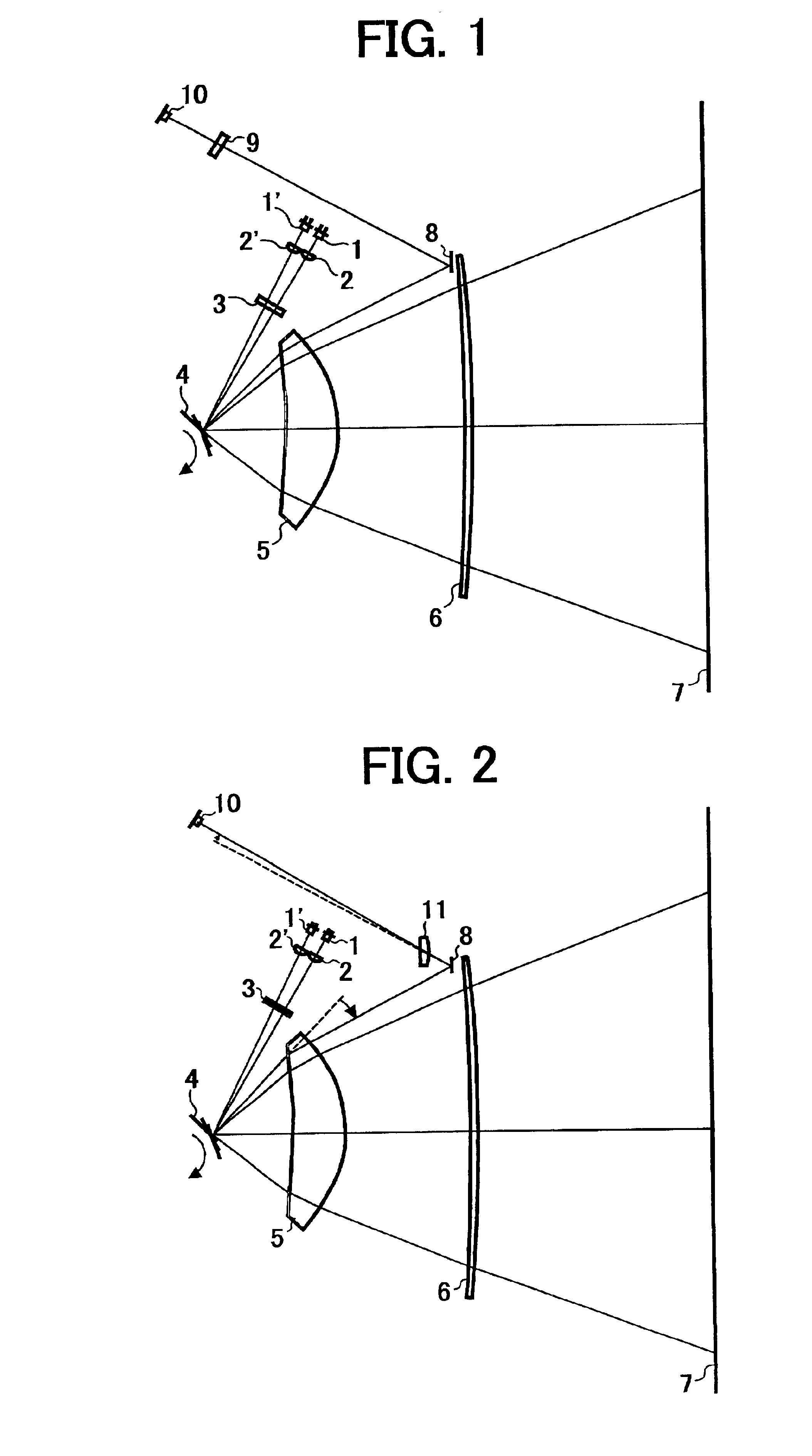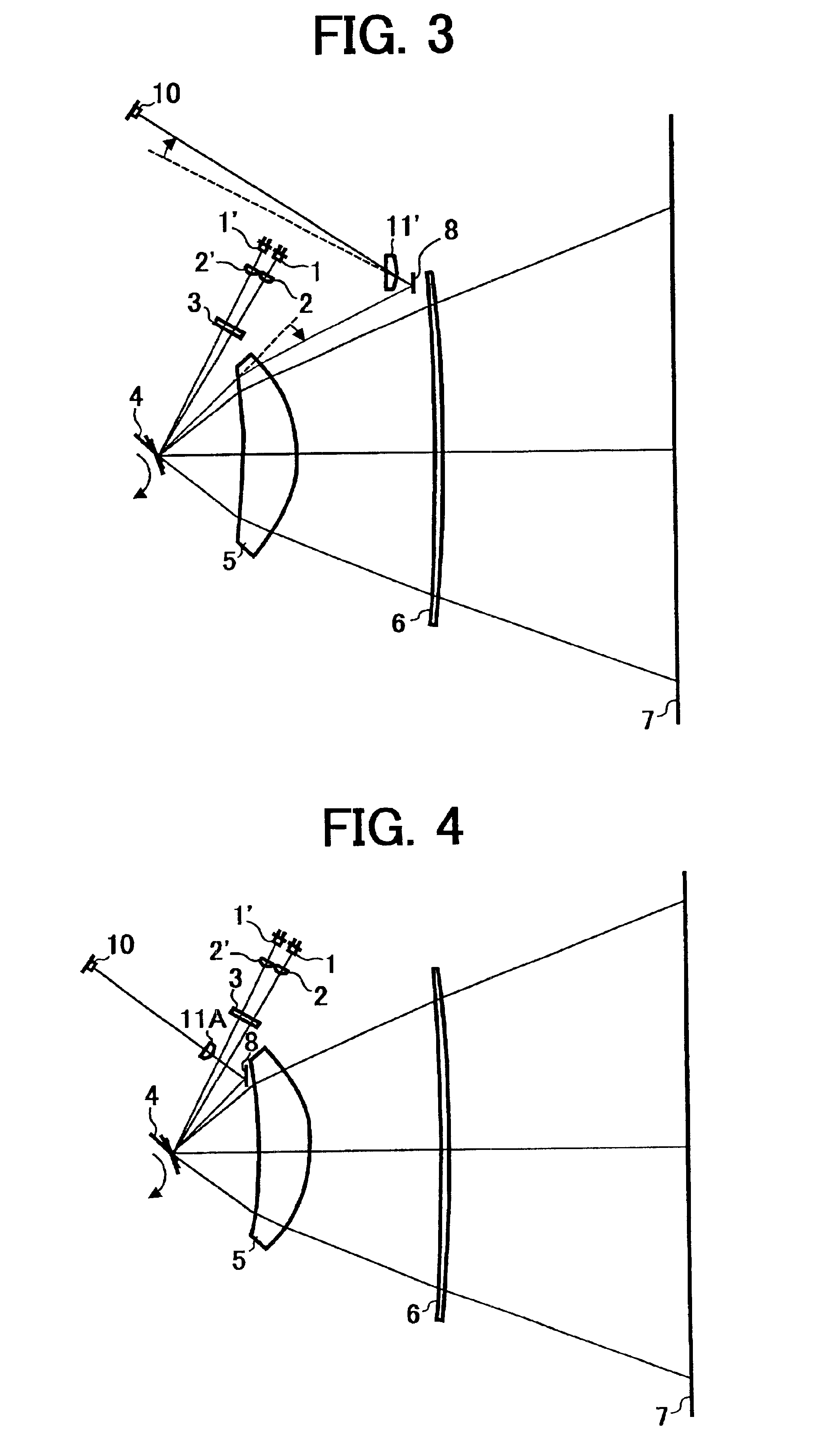Multi-beam scanner, multi-beam scanning method, synchronizing beam detecting method and image forming apparatus
a multi-beam scanner and beam detection technology, applied in the field of multi-beam scanners, can solve the problems of increasing the cost of the relevant multi-beam scanner, affecting the quality of achromatism-processed scanning optical systems, and the inability to mitigate the phenomenon of vertical line fluctuation
- Summary
- Abstract
- Description
- Claims
- Application Information
AI Technical Summary
Benefits of technology
Problems solved by technology
Method used
Image
Examples
first embodiment
[0122][First Embodiment]
[0123]The multi-beam scanner illustrated in FIG. 7A is changed into a scanner as illustrated in FIG. 1. The specific data of both the optical system ranging from the light sources 1 and 1′ to the rotary multi-facial mirror 4 and the scanning lenses 5 and 6 constituting the scanning image-forming optical system is the same as the above-mentioned data.
[0124]Unlike the background art example, in the first embodiment, a deflected beam to be detected as a synchronizing beam passes through the scanning lens 5 and is then guided to the light receiving element 10 without passing through the scanning lens 6. That is, a deflected beam to be received by the light receiving element 10 passes through the scanning lens 5 but not through the scanning lens 6 and is turned back at the mirror 8 to be guided to the light receiving element 10. The light receiving element 10 is arranged near an image forming point (i.e., image forming point by the scanning lens 5) in the main sca...
second embodiment
[0141][Second Embodiment]
[0142]The multi-beam scanner shown in FIG. 7A has been changed to the scanner as illustrated in FIG. 2. The specific data of both the optical system ranging from the light sources 1 and 1′ to the rotary multi-facial mirror 5 and the scanning lenses 5 and 6 constituting the scanning image-forming optical system is the same as that mentioned above.
[0143]A deflected beam to be detected by the light receiving element 10 passes through the scanning lens 5 but not through the scanning lens 6 to be turned back at the mirror 8 and then is guided to the light receiving element 10 via a converging lens 11 arranged distant from the scanning lens 5 by 196.1 mm calculated as an optical path.
[0144]The converging lens has the following parameters:[0145]Main scanning directional shape of the incidence side face: arc with a curvature radius of 100 mm[0146]Main scanning directional shape of the emission side: curvature radius of[0147]Center thickness: 6 mm[0148]Refractive ind...
third embodiment
[0164][Third Embodiment]
[0165]The multi-beam scanner illustrated in FIG. 7A has been changed to the scanner as illustrated in FIG. 3. The specific data of both the optical system ranging from the light sources 1 and 1′ to the rotary multi-facial mirror 4 and the scanning lenses 5 and 6 constituting the scanning image-forming optical system is the same as that mentioned above.
[0166]A deflected beam to be detected by the light receiving element 10 passes through the scanning lens 5 but not through the scanning lens 6 to be turned back at the mirror 8 and then is guided to the light receiving element 10 via a prism 11′ arranged distant from the scanning lens 5 by 197.4 mm calculated as an optical path.
[0167]The prism 1′ is constructed as follows.
[0168]Its incidence side face is inclined 18° in a plane parallel to the figure (i.e., plane parallel to both the main scanning direction and the optical axis of the scanning lenses 5 and 6). Its emission side face is perpendicular to the optic...
PUM
 Login to View More
Login to View More Abstract
Description
Claims
Application Information
 Login to View More
Login to View More - R&D
- Intellectual Property
- Life Sciences
- Materials
- Tech Scout
- Unparalleled Data Quality
- Higher Quality Content
- 60% Fewer Hallucinations
Browse by: Latest US Patents, China's latest patents, Technical Efficacy Thesaurus, Application Domain, Technology Topic, Popular Technical Reports.
© 2025 PatSnap. All rights reserved.Legal|Privacy policy|Modern Slavery Act Transparency Statement|Sitemap|About US| Contact US: help@patsnap.com



